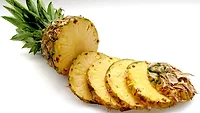Tool Helps Industry Reverse-Engineer Foods Considering Safety, Sustainability, Other Criteria

Image credit: chaiyananuwatmongkolchai via Pixabay
Scientists from Wageningen University and Research (WUR) have created a model that considers multiple criteria to help industry reverse-engineer foods that are palatable, nutritious, sustainable, safe, and economically viable.
To develop their Multi-Criteria Assessment Platform (MCAP) for food reverse engineering, the WUR researchers conducted a case study using a vegetarian burger. WUR collaborated with food producer Vivera to validate the platform and receive feedback.
The rationale behind reverse engineering is to begin with the intended product and then work backwards, step-by-step, to reach the ideal design. For food engineering, that includes looking at all aspects of the food supply chain, from the raw materials to the finished product. When a company considers all possible issues and factors from the start, they can act on them more effectively and create a better end product.
With the goal of developing a platform that would help producers evaluate and choose ingredients, the WUR researchers landed on six criteria:
- Nutritional value and taste
- Environmental impact
- Chemical risks
- Microbiological risks
- Economic viability
- Consumer preferences.
For each criterion, the WUR experts studied databases and models that would let them quantify and compare ingredients. The model provides rankings for ingredients against each criterion to reveal which ingredient is most sustainable, healthiest, safest, most profitable, or most preferred by consumers. It is then left to the food producer to decide which of the criteria they value most and which ingredients they want to use.
The WUR researchers found that, when conducting surveys to ascertain consumer preferences, the more familiar people were with an ingredient, the higher the rating they gave it for health and safety. Products with commonplace ingredients are therefore more readily accepted, even though that product may not be the healthiest, safest, or the most environmentally friendly.
The platform is constantly developing. WUR researchers can add any number of new components and functionalities, such as taste and texture, or the impact of side streams from a particular product. The experts also hope to digitalize the platform further and integrate the criteria more thoroughly with each other.
Looking for quick answers on food safety topics?
Try Ask FSM, our new smart AI search tool.
Ask FSM →








